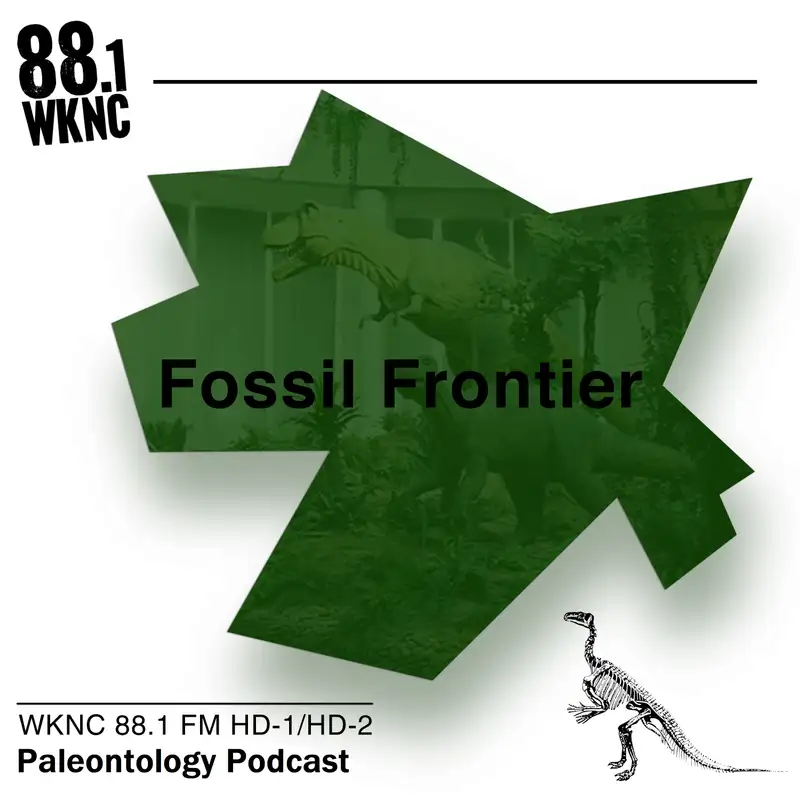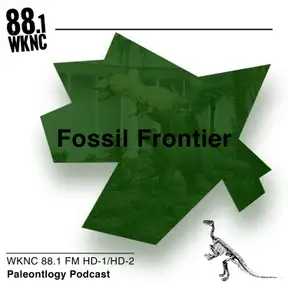Sloths: Colossal Creatures of the Ancient World
Download MP3Scrimble 0:06
Hello, everybody, I'm Scrimble and welcome to the third episode of my podcast fossil frontier, a paleontology podcast brought to you by WKNC 88.1. This show will be dedicated to talking about my favorite fossils and prehistoric phenomena, we're going to explore some of Earth's ancient treasures and uncover the stories that they have to tell. So if that's something you're into, you better lock in, because this week, we're talking about sloths. You're probably wondering Scrimble, why would there be a whole episode dedicated to animals who can barely walk on the ground and move so slowly that algae actually grows on their fur? Well, these symbols of laziness are actually remarkable examples of evolutionary ingenuity that are more than meets the eye.
Okay, So picture this. It's 2009 and a farmer in Brazil is driving his tractor through a cornfield, when suddenly, it lurches to the side and sinks into the ground, revealing what seemed to be an underground cave. Eventually, researchers went out into the field to investigate and they were met with a tunnel that was about 7 feet in diameter and 50 feet long. The walls, scarred with deep claw marks, revealed that this subterranean passage had once been home to a creature far from human.
As you probably guessed, this was the work of a sloth. But not just any sloth. This was the lestodon, or giant ground sloth, weighing as much as a small elephant and standing at over 12 feet tall on its hind legs. These massive sloths were able to dig the tunnels found throughout South America that reached over 250 feet long.
But the caves were not the only place you could find slots or suborder folivora. These animals in their heyday were everywhere, from underground caves to high in the mountains to even swimming in the sea. But how did they get to be so diverse? And how did all but two species of tree dwelling sloths go extinct?
So sloths broke off in the family tree from the rest of clade xenathara, or anteaters and armadillos about 28 million years ago, where they quickly diversified into almost 100 Different species across North and South America. They were able to survive so long because of their slow metabolisms, which lowered their body temperature and allowed them to use very little energy for their body mass, as well as their continuously growing teeth and complex digestive systems, which let them eat many kinds of plants and leaves that other animals didn't want. These two adaptations allowed sloths to eat foods that other animals couldn't and eat less of it, because they burn less energy.
For most herbivore species, there will be fierce competition for food and resources, which causes many animals to go extinct. But interestingly, sloths seem to almost cohabitate with up to 17 other species of sloth living in one area. The reason that they live together so well was because each species of sloth evolved to fill their own niche and find food in places separate from the others. Like take the thalassocnus, who turned to aquatic life to make ends meet. It fed on seagrass in developed denser bones and a larger body to adapt to the ocean. Scientists say that it uses claws to make its way across the ocean floor and defend itself against powerful currents, or even the diabolotherium, which took to the mountains. It developed more flexible arms for climbing almost 1000 feet up cliff faces and fed on high up vegetation. Then, of course, there's the multiple species of ground sloth, including the lestodon which grew in size immensely in response to frigid Ice Age temperatures in dug large burros for themselves that can still be seen today.
But what happened to these guys, where did they go? And if they were so diverse, and filled so many niches, then why do only two species of sloth remain? Well, ultimately, climate change made the sloth lifestyle simply unlivable. during the ice age, many sloths thrived because their large size and low metabolism helped them regulate their temperature. But eventually, Earth warmed up again, and then came large predators such as jaguars, and eventually humans, since the sloths risked overheating if they were too active, they were easy prey and were picked off one by one until extinction.
While they were known for their creative
adaptations to find food. In the end, they just weren't able to adapt to a changing world.
That was, except the tree dwelling sloths, these guys evolved to be smaller so they could hang from branches and were able to survive a warm climate. Only two species of sloth remain today, both suspensorial, spending the majority of their time in the trees. But while these two may look and act similar, they aren't very closely related at all.
The first of these species is the three Toed Sloth or Bradypus, which split off in the family tree from other sloths very early on about 30 million years ago, and they've been evolving to master a tree centered life ever since. But the other genus, the two Toed Sloth, actually comes from family megalonychidae, which included the giant ground sloths like the lestodon, they got into the tree game relatively late compared to their three-toed cousins, but they eventually evolved to fill a very similar niche. This is an example of convergent evolution, just like the true and false crabs with Carcinization. While both species of sloth came from different origins, they eventually evolved to fill a very similar niche, suspended in the trees.
From their ancient terrestrial and semi aquatic ancestors, to the slow moving tree dwelling Marvels we see today, sloths have undergone a remarkable transformation that shows that they're more than just icons of relaxation. While they may have tried out all kinds of different lifestyles, they eventually settled on the simple life of lounging around and eating leaves.
You know, in the end, maybe we should all take a lesson from the sloths, that it's okay to take life slow and easy, and just hang in there.
Thank you for listening to the third episode of fossil frontier. This has been a WKNC podcast Good night, and I love you.
The audio use in this podcast was Song Thrush nature field recording garden atmo, recorded by Garuda 1982 under Creative Commons License
Transcribed by https://otter.ai

